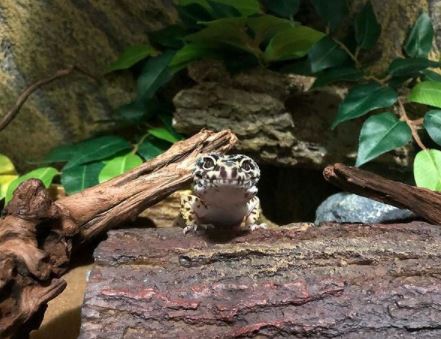How often should you mist a leopard gecko tank?
When caring for a leopard gecko, it is important to know how often you should mist their tank. And it is recommended that the tank should be misted every day with distilled water or an appropriate substitute.
Doing that will help keep your leopard gecko hydrated and healthy!
Related Posts:
- Top 7 Best Leopard Gecko Starter Kits for Easy Setup
- What Tank Size Does a Leopard Gecko Need?
- How Deep Should Leopard Gecko Substrate Be?
- Why Is My Leopard Gecko Hiding and Not Eating?
- Are Leopard Geckos Sensitive to Light?
How Often Should You Mist a Leopard Gecko Tank?
How often should you mist a leopard gecko tank?
Misting is recommended for adult geckos. They should be misted 2 times a week or when they are preparing to shed.
Humidity or moist boxes can eliminate the need to mist adult geckos, but not if they are hatchlings (younger than 3 months old). Hatchlings and baby leopard geckos need to be misted daily.
When Should I Mist My Leopard Gecko Tank?
Misting your leopard gecko tank is a great way to keep your enclosure humid and add moisture back into the air when it gets dry from using heating devices.
The easiest schedule for misting is once in the morning and once at night, but you can also mist whenever you think of it if you want to provide more humidity.
Remember that humidity always fluctuates, so don’t expect it to stay constant or be extremely high. If humidity is very low then it’s best to wait until nighttime to mist because the temps will be lower then and won’t evaporate as quickly.
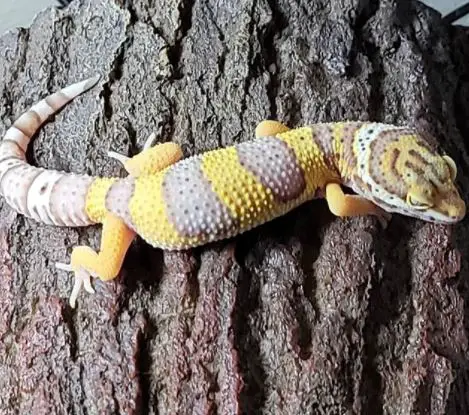
Why Should I Mist My Leopard Gecko Tank?
There are a few reasons why you should mist your leopard gecko tank:
- It’s a good way to provide extra humidity.
- If your substrate is glued down, then misting can help loosen it up.
- Frequent misting helps to remove excess urate from the enclosure, so you won’t have to change the substrate as much. This will be especially helpful if you have multiple leopard geckos being housed together because they will leave more urates in the tank, which means more frequent substrate changes.
Keep in mind that anytime you’re handling leopard geckos, especially when moving them to/from their cage, they are likely to release some fluids (urates or shed).
Leopard geckos are very clean animals but sometimes they just happen to leak!
What Kind of Misting Bottle Should I Use?
There are many different types of spray bottles on the market.
It’s important to make sure you get a spray bottle that has a fine mist option and is easy to control.
You don’t want it spraying too hard or creating too much humidity for your leopard gecko.
Also, even though some sprayers have “no-drip” options, this may not be true depending on how long your leopard gecko tank is.
In any case, it’s best to keep the nozzle close to the substrate so if anything does come out, it won’t cause problems with your leos!
Where Do I Place My Misting Bottle?
The best place for you to place your mister depends on what type of substrate you’re using.
We recommend placing it near the middle of your enclosure, right above the substrate.
This way, when you do mist, the water will fall back into the tank and not onto your leopard gecko or any nearby decor.
Do I Need to Use a Sprayer With Distilled Water?
No! This is one of those “old wives’ tales” that people pass down from generation to generation because they heard their grandparents say it was true or saw it on some random website somewhere.
You can use tap water as long as you know your local water is safe for human consumption (and preferably isn’t hard water).
Using distilled/RO/purified water may actually cause more problems than solutions because even if there are no additives in the water, there can still be too much calcium for leopard geckos to handle.
This is because most homes have water softeners/conditioners, which use salt (sodium chloride).
Even if you flush your system with lots of freshwaters after the salt gets put in, there will still be a little bit left in your pipes and this is what causes problems when misting.
If you want to use RO/distilled/purified water, then it’s best to get a small container from a pet store or online and keep it in the tank instead of using a spritzer bottle.
Do I Need to Treat My Tap Water?
No! Just like distilled/RO/purified water, there’s no need to treat your tap water with anything before misting.
Tap water is treated by the city and/or state, which means it’s safe for human consumption.
That being said, if you don’t know what kind of treatment process they use on your local water, then it’s best to err on the side of caution and treat your water before putting it in a spray bottle.
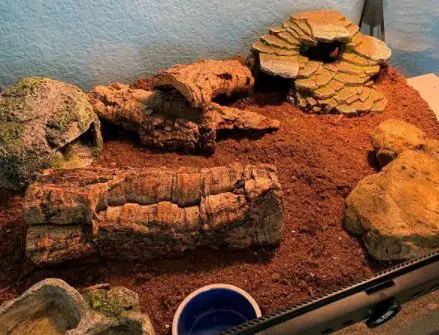
Do Leopard Geckos Like to Be Sprayed With Water?
No. Leopard geckos cannot absorb water through their skin and they do not drink from a dish of standing water.
You should never spray your leopard gecko with water or any other type of liquid! In the wild, these reptiles get most of their hydration from the dew that condenses on grasses at nightfall.
The moisture levels in a leopard gecko’s body can be tightly regulated by its environment and what it eats.
If you provide your pet with suitable habitat and nutritious diet, then there is no need to mist it with water. When kept in humid conditions, neither shedding nor infections are common problems for captive leopard geckos.
Keeping humidity between about 30 and 40 percent is ideal.
What If My Leopard Gecko Is Shedding Its Skin?
If your leopard gecko’s eyes are milky-looking at times or crusty or if it has smeared stinky material coming from its nose, then it may be suffering from an eye or nasal infection that should be treated by a veterinarian.
Can Leopard Geckos Swim?
No! You should never allow anyone to put their leopard gecko into the water for any reason because the animal could panic and drown.
With their long tails and low center of gravity, these lizards can easily topple over in a small dish filled with standing water, so don’t do it.
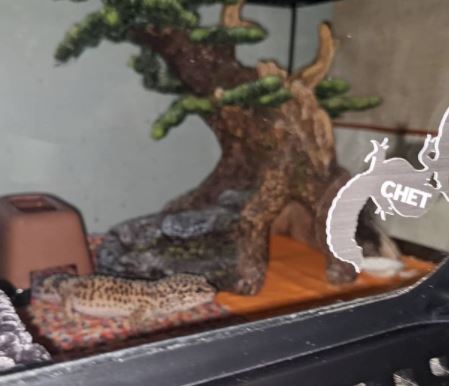
Automatic Misting System for Leopard Gecko
I’ve designed this misting system for my leopard geckos Agnes and Rufus. However, it should work with most animals.
The idea is that you set up the timers on your water sprayer to go off every X hours.
This allows you to focus on other things while caring for your pets rather than constantly checking their habitat, opening it up just to spray more water into the air multiple times during the day.
You can also leave town or travel without worrying about your pets not having enough water.
They will mist themselves as they naturally do in the wild! It has worked very well with my gecko, but I still keep an eye on her because she’s young, inquisitive, and willful. She isn’t shy about coming out to investigate when the time comes for her to eat.
The water is pushed up through flexible plastic tubing connected by barbed adapters.
The misting nozzles are foggers with an output of 0.16 gallons per hour (GPH).
They can be replaced with any number of emitters you might find in your local hardware store or garden shop that will provide the same flow rate at a suitable pressure (for most standard setups, 10-15psi).
I’ve chosen this type of nozzle because it provides more surface area than other shapes and thus more even distribution of water droplets, but there are many good choices available so feel free to experiment!
These particular types require minimal airflow, so they can really only be used with an air pump (ultrasonic or submersible).
How to Make Automatic Misting System Work?
Here’s how I made it work with my setup.
I started with a 10-gallon Rubbermaid Action Packer, which I cut just above the logo. I have attached some photos of the process if you don’t know what that means.
The leopard gecko habitats are nice because they have a thorough lid for misting/watering so you can easily use this as a starting point.
Since leopard geckos don’t climb, it’s not important to have the water dishes at a specific height, so I used those areas as my misting chamber.
I cut out an acrylic panel and glued it in place using silicone adhesive and two small hinges to hold it shut and allow for easy cleaning.
The hose is attached by caulk and needs tightening once a week or so, but hasn’t been much of a problem.
I wouldn’t recommend this for geckos that aren’t already accustomed to being handled or that can climb because you will need access to their habitat to fill the dishes with fresh water daily (unless you choose your system carefully).
The tubing runs down through one of the side holes, across under the shelf where I typically put her hide, to the other side where it is attached to a pump/air stone in one of my two 10-gallon tanks.
I have used both an older Whisper 10 filter and several different water pumps in this system so far.
The former was more effective. However, it required constant supervision because it had to remain submerged in water at all times.
It died after about 6 months due to heat exhaustion (I think). The air pump seems sturdy enough but isn’t made for submerging or constantly running wet, so I don’t trust it completely. Fortunately, this design uses little airflow.
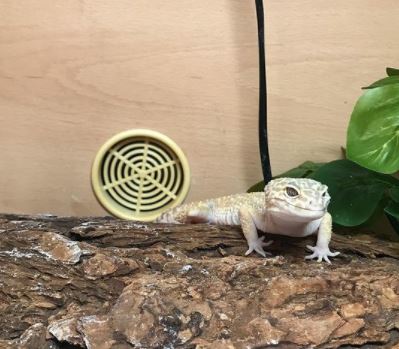
What Humidity Level Does a Leopard Gecko Need?
As a reptile owner, you should be concerned about the humidity level that your pet is exposed to.
This value influences your animal’s health and growth. Leopard geckos are especially sensitive to humidity conditions, which is why this article was written.
It will help you better understand how humid conditions are important for leopard gecko care.
Furthermore, it provides means on how to maintain proper humidity levels for this particular type of lizard. Keep reading if you want to find out what humidity a leopard gecko needs!
Why Do You Need to Know Humidity?
Humidity represents the amount of moisture in the air and it has many different meanings and uses: Good or bad? Healthy or harmful? You will be able to find out about humidity’s significance and how it can affect your pet gecko.
What Happens If the Humidity Level Is Too High?
Excessive humidity causes a number of health problems for leopard geckos: respiratory diseases, eye infections, and skin conditions such as shedding problems or mites.
High levels of moisture encourage harmful microorganisms to proliferate, therefore increasing the risk of bacteria developing on the animal’s skin and in its habitat.
However, you shouldn’t worry about these things if your pet lives under proper conditions.
The high humidity is due to too much moisture and not enough ventilation that your tank may provide (if it isn’t well-ventilated, then you should clean it).
Furthermore, some reptiles produce too much waste, which in turn creates humidity in their habitat. You should improve the ventilation to prevent excessive moisture build-up.
Is Low Humidity Safe for Leopard Geckos?
The opposite of high humidity is low humidity and this value can be just as harmful to your pet gecko.
Low levels of humidity make it difficult for these lizards to shed properly, which results in retained eye caps (overgrowth) or stuck sheds (sheds that are not removed because they are too dry).
While these problems may seem harmless, they create risks because the animal may get infections, lose sight, or even die if you don’t take care of them quickly enough.
Leopard geckos need a relative humidity between 40% and 50%.
If your tank falls within this range, then there’s no problem. If it doesn’t, you will have to spray your gecko’s tank with water from time to time.
This will help the shedding problems and your leopard gecko can live a happy life under these conditions.
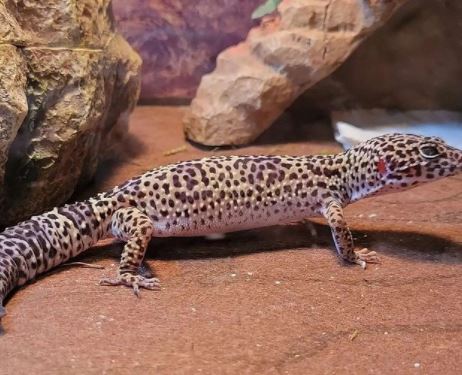
How to Ensure Proper Leopard Gecko Humidity Levels?
If humidity is that important for leopard geckos, then how can you ensure they have the right levels? There are several things you should keep in mind:
1. Maintain a Proper Temperature
The ideal temperature range for your pet is between 70°F (21°C) and 80°F (26°C).
High temperatures cause excessive shedding problems, which is why you need to make sure this range isn’t exceeded. On the other hand, cold temperatures result in respiratory diseases and other health problems.
2. Clean the Tank From Time to Time
Leopard geckos are not picky animals but they still produce waste that turns into humidity inside their tanks.
By cleaning it frequently, you will be able to maintain a proper level of humidity.
Both substrate and decorations should be removed from the enclosure once a month and replaced with new ones.
If you don’t want to change everything, then make sure you use easy-to-clean objects such as rocks or vines because resin decorations also soak up moisture, which has negative consequences for leopard gecko care.
3. Don’t Spray Your Gecko’s Tank With Water
This may sound contradictory because you probably know that geckos need humidity to shed properly.
However, spraying the tank with water isn’t a good idea for this specific lizard. You will force it to drink more, which results in health problems such as bladder infections.
Furthermore, if you spray the inside of the tank during shedding, then your leopard gecko won’t be able to remove its old skin.
4. Place Potted Plants Inside the Enclosure
If you want to increase humidity levels, then there are various things you can do, but placing live or fake plants is an effective method.
They will soak up moisture from the air and create a more humid environment, which makes it easier for your leopard gecko to shed.
The best plants are ones that don’t have big leaves because they will dry out too much.
5. Give Your Pet Proper Temperatures and Humidity Levels Throughout the Year
If you keep an eye on temperatures, then you should also consider them in relation to season changes.
Leopard geckos need specific conditions all year round just like any other leopard gecko would, so if you’re keeping them in a terrarium, then it’s easier for you to maintain constant conditions.
Seasonal changes can be very harmful for these lizards, so make sure their tank is always at the right temperature (not too hot or cold).
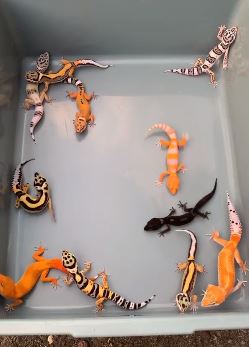
What Is the Best Temperature for Leopard Geckos?
I am frequently asked the question of what temperature range is best for your leopard gecko.
Since leopard geckos are reptiles, they rely on their environment to control many aspects of their life, including thermoregulation
A healthy leopard gecko will be alert, active, and feeding when the environmental temperatures are in the appropriate range for that species.
Providing proper heat is an important aspect of captive care of leopard geckos just as it is with all reptile species.
While providing heat allows us to optimize conditions that may not otherwise be possible, we must also take into consideration that too much heat can be just as detrimental as too little heat.
The following information has been compiled from a variety of sources from around the internet, including websites, forum posts, and research articles.
There are many theories of the best temperature for leopard geckos that range from the low 70s to over 90 degrees Fahrenheit.
Results vary depending on where you read or ask this question.
Much of what has been written on the subject refers to a study conducted in 1954 by Ullrey, who provided evidence that Leachianus have a preferred optimum temperature between 81-86 degrees Fahrenheit with reduced metabolism at 80 degrees and reduced feeding/activity at 82 degrees.
I have found no studies supporting a “best” temperature for leopard geckos outside of this range.
In fact, it seems common sense tells us that if we refer back to our other reptiles, there can be a big difference between species with optimal ranges for some as low as 72 degrees and 74 degrees Fahrenheit.
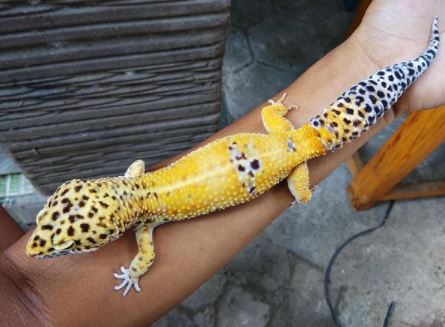
One way is by using a humidifier. These come in all shapes and sizes, so there’s bound to be one that will suit your needs for a leopard gecko tank.
Humidifiers are great because they can be left on 24/7 (yes, you should leave the tank humid when the gecko is away) and when done right, will make it possible for any reptiles in your care to have a healthy terrarium.
One thing that makes them unsuitable for some people is that unlike thermostats or light timers, which are built into many tanks, humidifiers need power all the time.
If there’s no socket near the leopard gecko tank, then the use of a humidifier might not be what you’re looking for.
If you are finding it hard to get one to work properly with your particular brand/model of heater or thermostat, you can always opt to buy separate ones.
How Many Types of Humidifiers Are Available?
Humidifiers usually come in two types: cool and warm mist. The right type to get depends on your geckos’ needs (it is best to get both).
Since leopard geckos like it pretty hot, you should get a good quality warm mist humidifier. To determine which is the best one for you, make sure that the tank size and the wattage of your heater are taken into consideration when purchasing a humidifier.
If they’re not displayed on the box or something similar, then just ask before buying.
If possible, find out what other people who have bought the model say about its performance. There’s nothing worse than getting home and finding out that your new purchase doesn’t work properly!
The Importance of an Automatic Shut-off Feature for Reptile Humidifiers
A word of caution: When you purchase a humidifier, make sure that it has an automatic shut-off feature!
As you probably know by now, reptiles are cold-blooded and need their environment to be regulated constantly.
If your heater goes haywire or the power fails (and sometimes even when there’s just a small blackout), then this can seriously damage (or even kill) your leopard gecko.
The safest way to go would be to get one of those with an automatic shut-off option. These usually cost about $10 more than regular ones.
Another useful thing to have in conjunction with a humidifier is a hygrometer, which measures humidity levels.
It will tell you whether the terrarium needs less (or more) water vapor and help you maintain the perfect temperature and humidity levels for your leopard gecko to thrive in.
If you get serious about keeping leopard geckos, then there’s no way around purchasing one of these. They’re not too expensive (generally less than $20) and provide plenty of benefits.
Another way is by using a spray bottle filled with water mixed with some natural oils such as lavender or peppermint oil for a leopard gecko tank.
To do this, add four to five drops of your choice of essential oil into a spray bottle filled halfway with water.
If you’re using peppermint oil for a leopard gecko tank, then the mixture will be more effective on larger tanks rather than small ones because it can cause serious harm to your geckos.
You can avoid spraying directly onto them or in their eyes so if they happen to wander under the mist, they’ll stay safe from any adverse effects of the essential oils. Spray onto plants and substrate instead.
Conclusion
Leopard geckos are one of the most popular reptile pets.
The care for these particular lizards varies depending on the type and age, but there is no denying that they require a lot more time than other common reptiles like bearded dragons or turtles.
You will need to invest in their enclosure, which can be complicated if you don’t know what to buy first, so it would be best to research before making any purchases!
How often should you mist a leopard gecko tank?
One thing all leopard gecko owners should do is mist their tank at least once per day with fresh water.
This helps maintain humidity levels as well as provide hydration through droplets produced by condensation due to temperature changes.

